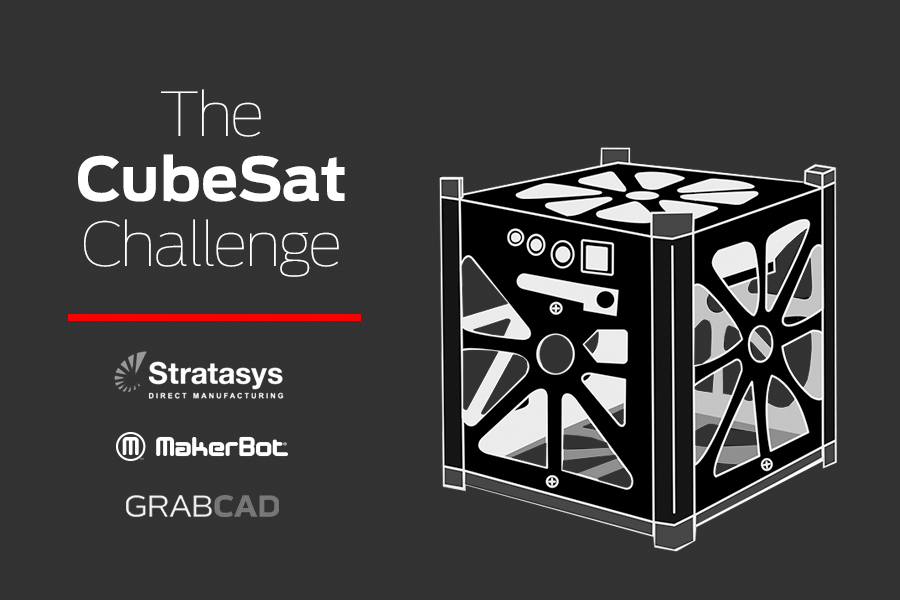
Latest News
May 27, 2015
Additive manufacturing (AM) has become the go-to technology for aerospace engineers looking to shave a few more pounds off a design, thus conserving both materials and improving fuel economy. Everyone from NASA to Rolls Royce has begun working with the technology, bringing AM parts into the sky and beyond. 3D printed parts can be used for projects both big and small, including in this case, the smallest of space faring objects: CubeSats.
Stratasys, along with MakerBot and GrabCAD have announced the CubeSat Challenge. The challenge is seeking practical designs for future CubeSats with frames manufactured using AM rather than more traditional methods. The theory behind turning to AM designs is the same for other aspects of aerospace design in that lighter materials result in reduced costs.

“3D printing allows aerospace engineers to think differently about building satellites and gives them a whole new toolset for packing more capability into a constrained volume,” said Scott Sevcik, business development manager for Aerospace & Defense at Stratasys. “3D printing can also simplify production as you move from the hand-built satellites of today to an automated process that will enable constellations of small satellites to be built more efficiently. We’re excited to see how the GrabCAD community can advance the CubeSat standard to provide even greater utility.”
What is a CubeSat? A CubeSat is a 10 cm (4 in.) cube that generally weighs around 1 kilogram (2 lbs). They are usually used for research purposes, and CubeSat construction is a fast-growing sector of the aerospace field, owing to the low costs involved. A standard CubeSat can be constructed for under $50,000 making it the least expensive option for companies hoping to launch research satellites.
The goal of the CubeSat Challenge is for entrants to design a frame for future CubeSats that lowers overall weight and reduces the number of pieces that require manual assembly after manufacturing. Current models require upwards of 50 parts, including fasteners, simply to build the frame. A 3D printed frame should be able to reduce the parts count because AM isn’t constrained by the same limitations faced by traditional manufacturing.
Entries are required to contain an STL file, renderings, and a description of the design. The contest will be judged by a panel of experts, with a $2,500 first place prize. Entries that place in the top three will also receive a MakerBot Replicator complete with material pack. The entry deadline is June 22. Full rules for the contest can be found here.
Below you’ll find a video about CubeSats.
Subscribe to our FREE magazine, FREE email newsletters or both!
Latest News
About the Author
John NewmanJohn Newman is a Digital Engineering contributor who focuses on 3D printing. Contact him via [email protected] and read his posts on Rapid Ready Technology.
Follow DE





